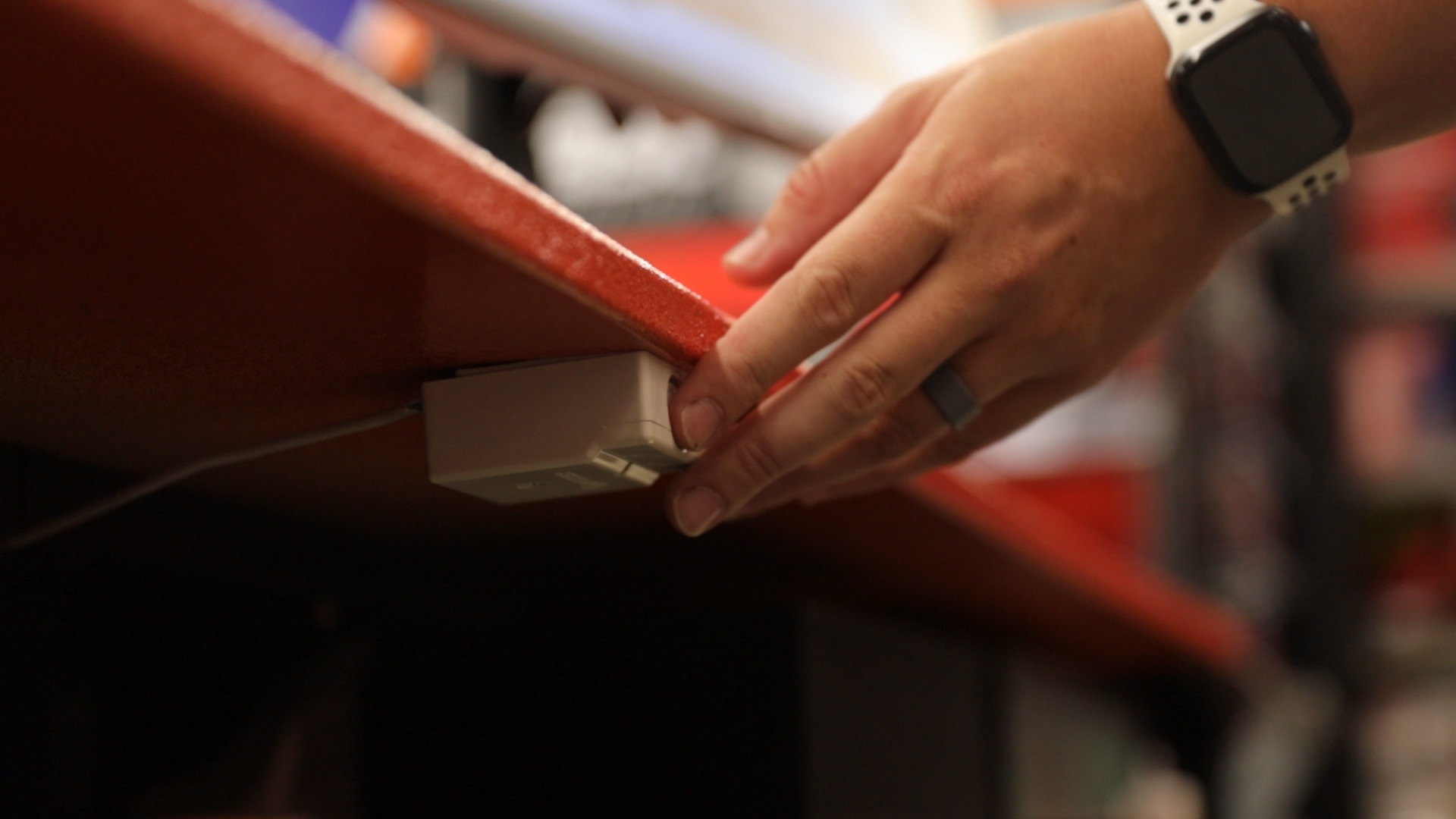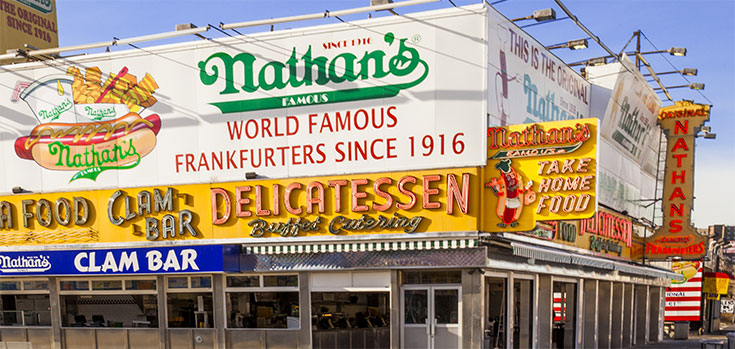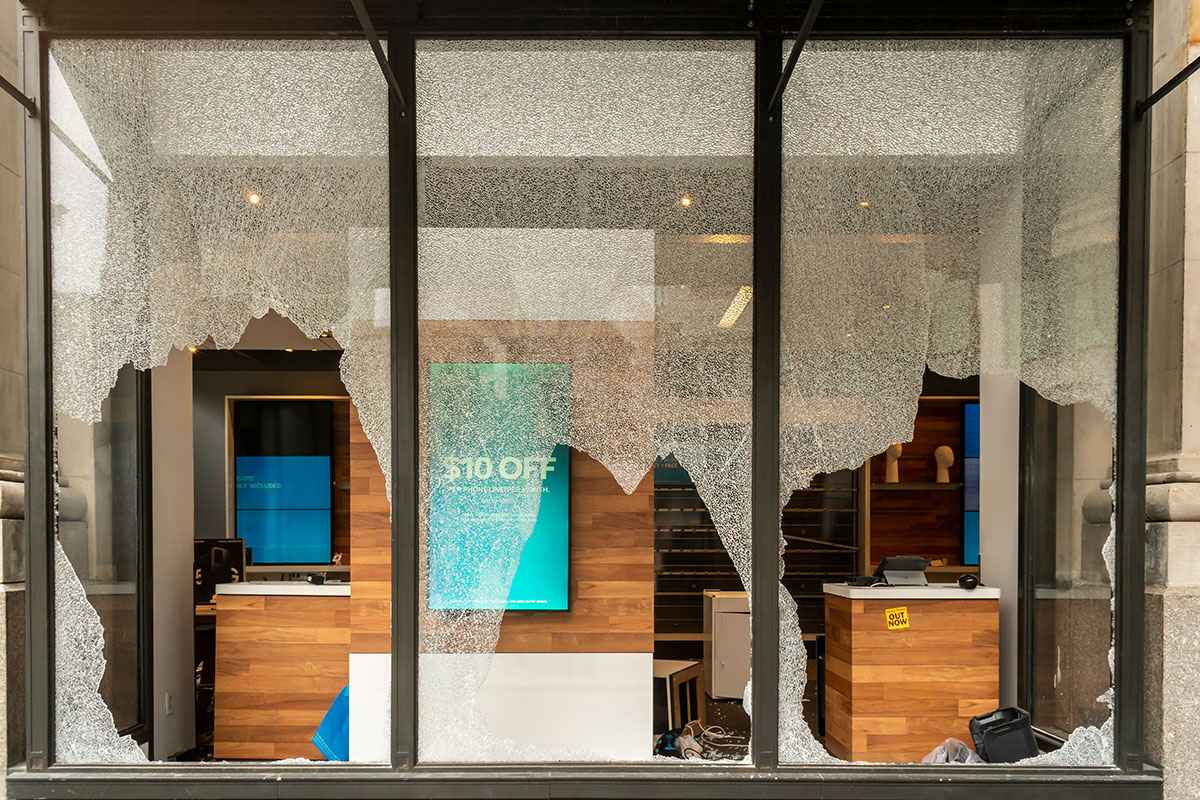Operating quick-service restaurants (QSRs) isn’t easy. Loitering and vandalism are two of the most common and costly challenges you’ll face.
How often have you come upon a scene in your restaurant where a group of people occupy space within the dining area without making a purchase? While seemingly harmless, loitering can often lead to more serious issues like vandalism, increased safety risks to customers and employees, and negatively impact the restaurant’s reputation.
The reasons are obvious:
- When customers start to feel uncomfortable or unsafe, they stop visiting.
- When employees are frequently made to deal with potentially aggressive loiterers, productivity and service quality deteriorate.
- When a loitering or vandalism incident escalates in your restaurant and the incident happens to go viral, your business and brand take a hit.
That’s why restaurant chains need proactive security measures to prevent loitering and vandalism. In this post, we’ll break down how these issues can hurt your business—and share practical strategies to stop them.
How Loitering and Vandalism Hurt QSRs
Increased Employee Turnover and Workplace Stress
In the fast-paced world of QSRs, employees are already juggling customer service, food prep, and strict compliance standards. Dealing with loiterers only adds unnecessary stress and distraction. Stressful environments are a leading factor for the high employee turnover rate in the QSR industry. High employee turnover adds to replacement and training cost and erodes the already thin margins in the QSR industry. At the end of the day, employees want to focus on customer service – not deal with stressful confrontations with loiterers and vandals.
Degrades Customer Experience and Brand Perception
Customers who feel uncomfortable or unsafe are unlikely to return to your restaurant. In response to safety concerns, Starbucks recently reversed their open-door inclusivity policy, and now only allows paying customers to use their spaces. In today’s digital age, where incidents and reviews spread instantly, even one complaint about a ‘sketchy atmosphere’ can do lasting damage. A single negative impression can quickly reshape how people view your brand. Staying ahead of these risks isn’t just smart, it’s good business.
Creates Operational Disruptions and Safety Risks
Imagine this: It’s a busy lunch rush at your restaurant and you also have a bunch of loiterers in the dining area. There’s a line at the register and your employees are already under pressure. Instead of focusing on taking orders and preparing food, they’re dealing with loiterers in the dining area. The situation escalates as the loiterers become confrontational, leaving your staff feeling unsafe. Meanwhile, orders are delayed, customer frustration builds, and the quality of service slips. To combat such issues, several fast-food chains have adopted strict 30-minute dine-in limits. The longer loiterers stay on your property, the risk of confrontation, vandalism, property damage, or even theft grows. A chaotic environment isn’t just an inconvenience – it’s a serious liability.
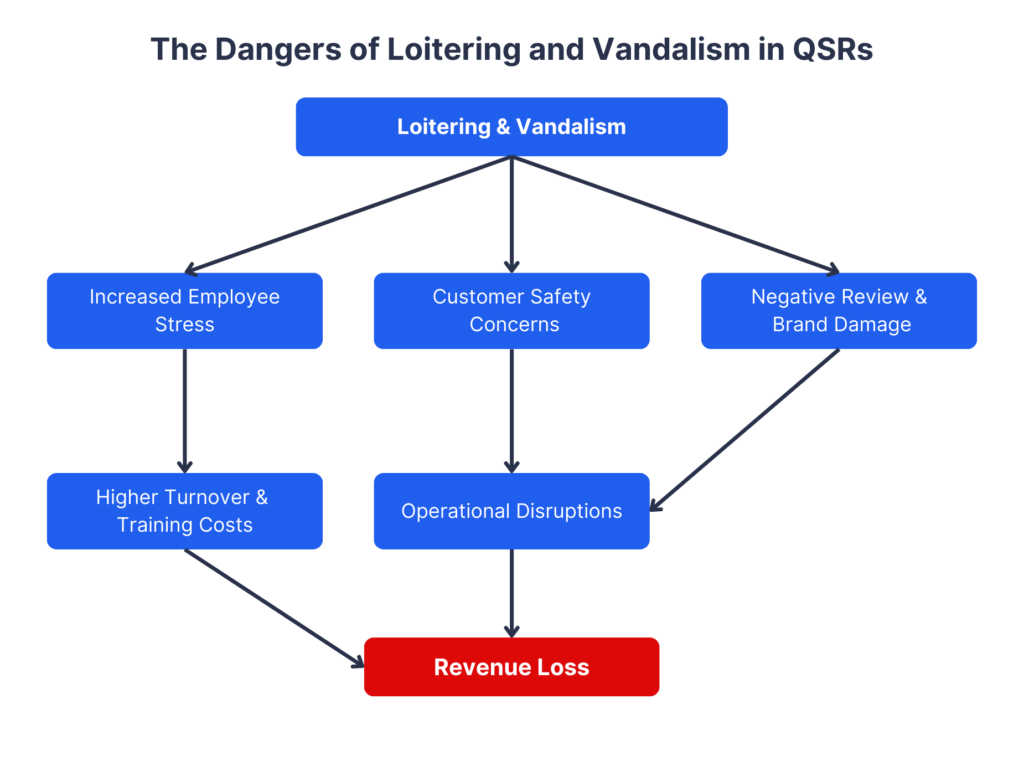
Proactive Security Measures to Deter Loitering and Vandalism
Let’s break down the tools QSRs can use to prevent loitering and vandalism—starting with what works today, what’s just around the corner, and what still comes down to smart, human decisions.
1. Get the Right Security Cameras in Place
Security cameras are often the first line of defense against loitering and vandalism in QSRs. But just installing a few cameras isn’t enough.
Ask yourself this: Are your cameras actually helping your staff prevent incidents, or are they just collecting blurry footage after the fact?
If your outdoor cameras don’t cover key areas like entrances, parking lots, back alleys, or dumpsters, you’re leaving your restaurant exposed. And if your system still runs on outdated tech, it’s time to upgrade. Legacy cameras miss too much. Poor image quality, blind spots, and lack of real-time access make it harder to respond when it counts.
Modern security cameras fix these issues. Vandal-resistant models with night vision and high-definition video don’t just record—they deter. When loiterers see visible surveillance, they know someone’s watching. And if they don’t back off, your system can alert a live monitoring team in real time.
Need a quick guide on what cameras to place where? Here’s a simple breakdown:
Better coverage, better image quality, better control—that’s what you get when you move on from legacy systems. You’ll also be ready to layer in AI tools later, giving your team even more power to detect and respond to threats fast.
The bottom line? Smart camera placement and modern hardware help your staff stay one step ahead of trouble before a bad situation spirals out of control.
2. Utilize Two-Way Audio & Remote Intervention
Getting an alert about loitering or suspicious behavior is only useful if your team can act on it right away. Two-way audio fills that gap. It connects cameras, microphones, and speakers placed outside your restaurant to a live monitoring center, giving trained specialists the ability to step in the moment they see trouble.
Here’s how it works: Once your system detects activity, a remote intervention specialist reviews video and audio zones to assess the situation. If they spot loitering or vandalism, they use outdoor speakers to issue a voice-down warning. Something as simple as “This property is under surveillance. Please leave immediately” can stop an incident before it escalates.
According to a study by Interface, voice-down commands resolve 99.86% of incidents without police involvement.
There’s more than one way to trigger a voice-down. Employees with access to panic buttons can activate a pre-recorded message. They can also pick up a dedicated intervention phone and request a live response. Meanwhile, the remote monitoring team can make scheduled announcements or perform random virtual walkthroughs at any time. This gives loiterers the sense that someone is always watching—and ready to respond.
How Two-Way Audio and Remote Intervention Work
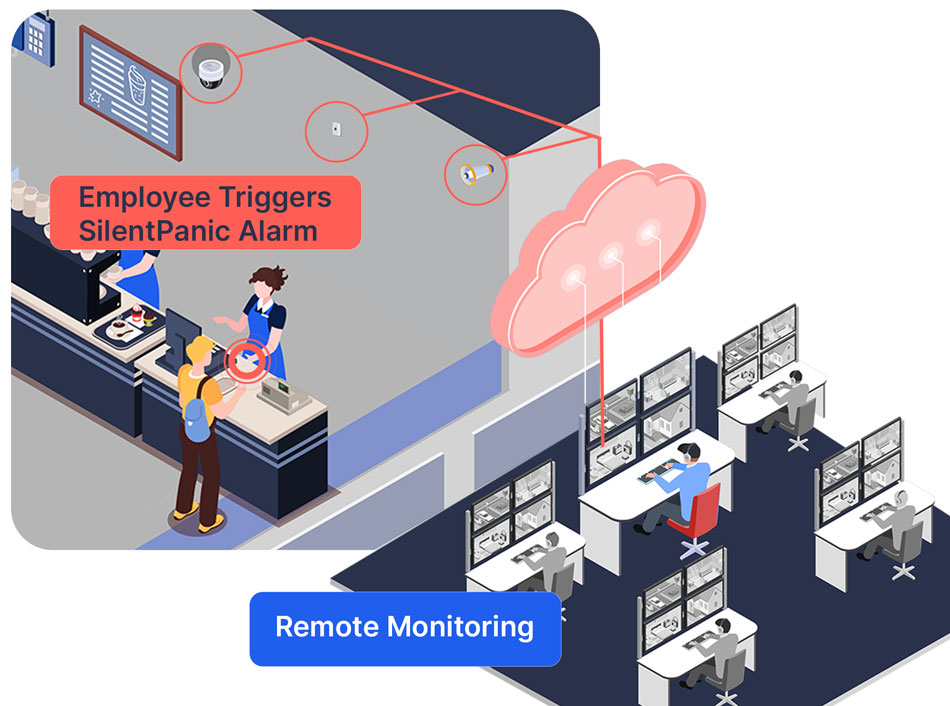
To make this work, integration is key. Your outdoor cameras, microphones, and speakers must all connect seamlessly to the monitoring center. The setup needs to deliver clear visuals and crisp audio so specialists can act fast. And your staff should know exactly how to alert the team when they feel unsafe. When all the parts come together, you’re no longer reacting after the fact—you’re shutting down issues as they unfold.
3. Implement AI-Based Voice-Down Solutions
Once your cameras, microphones, and speakers are in place, AI can take your security strategy even further. AI-enabled cameras don’t just record what’s happening—they detect unusual behavior in real time. If someone lingers in a high-risk area, the system can instantly play a message like, “You are under surveillance. Please leave if you’re not a customer.”
QSR Magazine reports that AI-driven voice-down systems help reduce loitering significantly. If the warning doesn’t work, the system escalates the issue to a live security operator, who can assess the situation and respond with a more direct message—or call the authorities if needed.
What makes this powerful is the ability to fine-tune your AI setup. You can train it to watch specific zones where loitering and vandalism usually happen:
- Drive-thru lanes – Someone standing outside a vehicle could be panhandling or blocking traffic.
- Entry points – The space between the doors and the counter is a common loitering spot.
- Dining areas – If a group camps at a table too long, the system can play a message reminding them of dining limits.
- Back doors and alleyways – After closing time, human detection in these zones should trigger an immediate alert.
- Restrooms – If someone enters without making a purchase and stays beyond a set time, the system can take action.
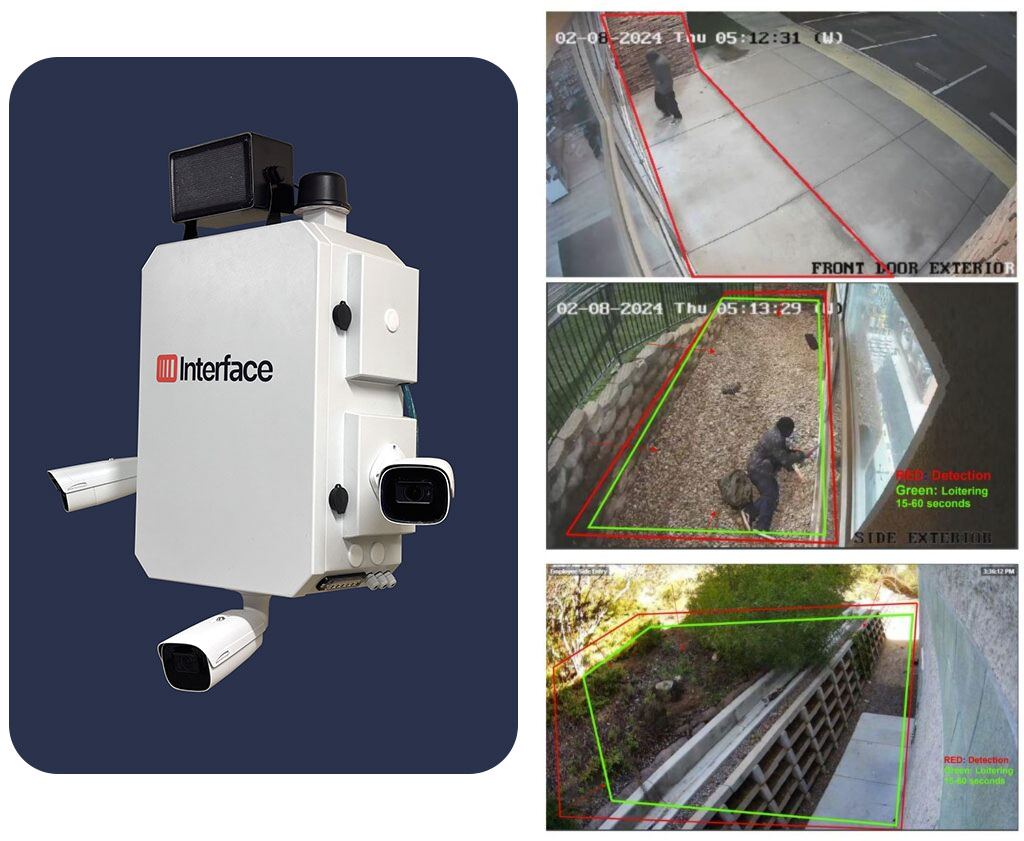
Once the system detects a potential threat, it follows a tiered response:
Level 1
A general warning - “This area is under video surveillance.”
Level 2
A more direct message - “Loitering and vandalism will not be tolerated.”
Level 3
If the behavior continues, the system can escalate to live intervention.
AI doesn’t replace human decision-making, but it gives you a faster, smarter way to stay ahead of trouble. And when paired with live remote intervention, your restaurant has a real-time system that can detect, deter, and defuse incidents before they spiral.
4. Integrate AI-Enabled Cameras and VMS with Access Control Systems
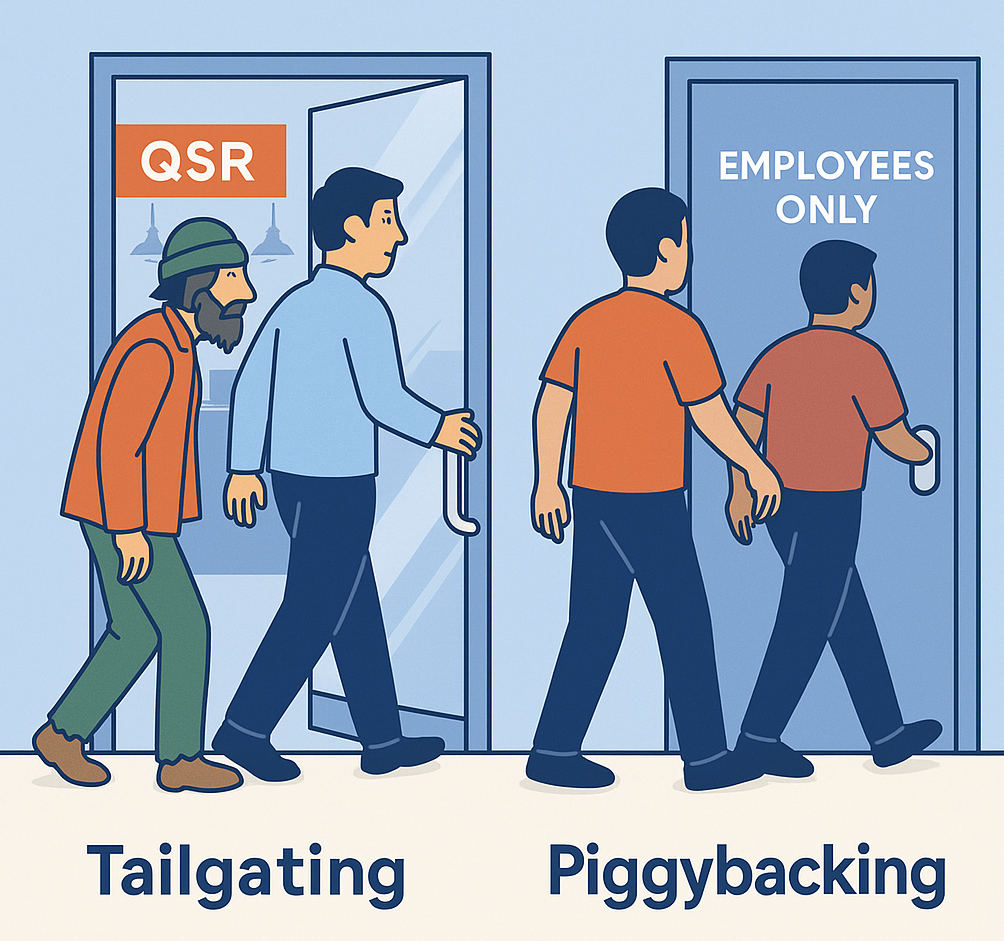
These systems can also prevent loiterers from slipping in through delivery doors or lingering near restrooms, storage rooms, or side entrances. If a door is held open too long, AI can trigger a message or even notify a monitoring center to step in.
With AI watching entry points and high-risk zones, QSRs gain more control over what happens outside their buildings, where most loitering and vandalism begins. And when trouble shows up, your system doesn’t just see it. It acts.
5. Leverage Emerging AI Capabilities
AI has already started to reshape how QSRs detect and respond to threats, and it’s only getting more capable.
Predictive analytics now allows restaurants to flag risks before they escalate. These systems analyze historical data, recognize patterns, and identify anomalies like unusual foot traffic, repeat activity near back entrances, or after-hours movement in outdoor areas. Some platforms even pull in live crime data from surrounding neighborhoods, helping QSRs adjust alert thresholds and tighten response times based on what’s happening nearby.
Conversational AI is already making waves. Very soon, automated voice-down solutions will no longer rely on generic voice-downs. They will have the capability to tailor messages based on real-time inputs—like a person’s behavior, location, or even what they’re wearing. For example, a system might say: “The individual in the blue hoodie near the back door, this property is under surveillance. Please leave immediately.” That level of specificity gets attention and reinforces the message that someone is actively watching.
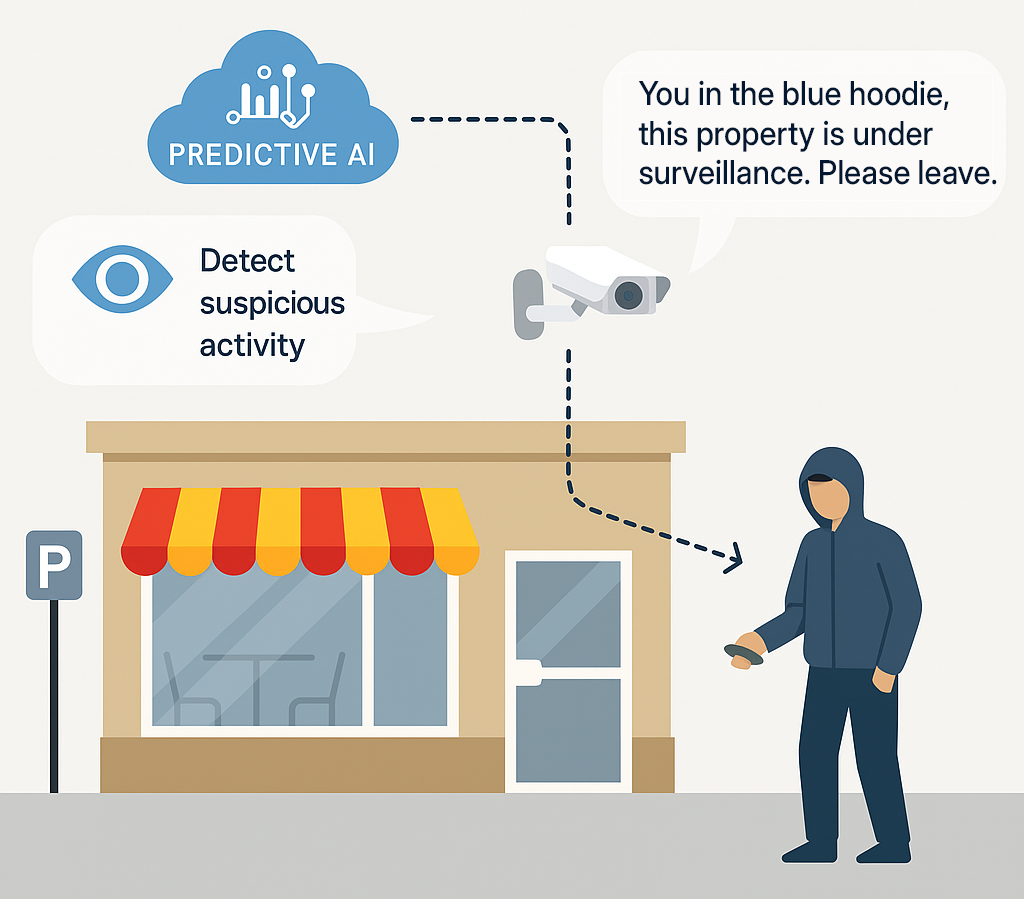
These AI-driven systems also learn with every interaction. They analyze outcomes whether the loiterer leaves, lingers, or returns and adjust future responses to improve effectiveness. Over time, the system becomes more precise and more confident in choosing the right intervention at the right moment.
For QSR operators, this means a smarter, more proactive layer of defense, one that doesn’t just detect problems but knows how to speak up with the right message, at the right time, in the right way.
6. Deploy Security Measures Without Losing Humanity
Vandalism often starts small – scratched windows, graffiti, a damaged lock and quickly snowballs if left unchecked. That’s why quick-service restaurants need to act early. Simple upgrades like shatterproof glass, anti-graffiti coatings, and bright exterior lighting send a clear message: this property is monitored, maintained, and not an easy target.
The Broken Window Theory backs this up. When damage is visible and ignored, it signals neglect. That’s when vandals return and bring more serious problems with them. Fixing issues right away, repainting walls, and keeping spaces clean all show that the environment is under control. Even small repairs done fast help prevent bigger incidents.
But physical improvements and technology solutions aren’t enough on their own. They won’t solve deeper, systemic challenges like chronic loitering. This requires a more balanced approach that balances rules with human empathy. QSRs have always been more than places to grab a quick bite. They’re part of the community. When people feel welcome and safe, they keep coming back.
One fast-food manager took that role seriously, offering a homeless individual shelter from the cold, listening, and helping him get back on his feet. That kind of empathy builds trust. It also works. A 2025 blog post by The Power of Preparedness shows how partnerships with local shelters and city officials can reduce loitering while treating people with dignity. Creating policies that combine compassion with accountability is what keeps your staff safe, your brand respected, and your restaurant open to the right kind of traffic.
Build a Smarter Security System That Stops Loitering Early
Your system is only as good as the planning, hardware, and training behind it. Use this checklist to make sure your restaurant is ready to prevent loitering and vandalism before they escalate.
Equip Your Site with the Right Tools
- Install outdoor cameras, microphones, sensors, and speakers to detect and respond in real time
- Make sure devices integrate with a cloud-based Video Management System (VMS) that supports AI-driven analytics
- Use AI to filter out false alarms, like trees moving or passing cars, and zero in on actual threats
Upgrade Outdated Hardware
- Replace legacy cameras that can’t process AI-based detection or high-res video
- Choose devices that can store footage locally, in the cloud, or on the edge based on your needs
- Ensure your system can support advanced functions like human/vehicle detection and perimeter alerts
Align Your Internal Teams
- Get IT, HR, and legal involved early especially if privacy or data compliance is a concern
- Define data collection and storage policies so there’s no confusion later
- Appoint a team or owner to manage the system once it’s live
Train Your Staff
- Explain how the system works and why it’s being installed
- Reinforce that it’s a safety tool, not a way to monitor employee performance
- Create short, practical training sessions so everyone knows how to use features like panic buttons or report incidents
Stay Proactive, Not Reactive
- Use analytics to spot loitering early and trigger alerts before the situation escalates
- Cut down on unnecessary police dispatches
Schedule a free business security consultation to find out how Interface can help you build your proactive security solution to protect your employees, customers and business.

